I have a circuit that sends a 300 ms signal (a short button press) from pin D13 on an Arduino Nano to a 4066 chip, which then sends it to 4 boards (A, B, C, and D). Each board connects to 30 MP3 players (GPD2846 modules) with 5 V power, GND and an "in" and "out" connection, which go to either side of the "Next track" button on the MP3 player.
The Nano is powered with a standard 9 V adaptor, and the 5 V part is powered with a 5 V, 45 A PSU which should be more than enough to handle the current draw of the modules.
Each MP3 module contains an SD card with a single track on it. Each track is (for now) 90 s long. The Arduino sketch is designed to make it skip (so restart the track) every 60 s, with all of the tracks playing simultaneously.
I can't get it to work reliably. I only have one of the boards fully finished (30 modules) but it's ignoring the trigger. I built a small-scale one with just 4 modules, one coming off each of the 4 switches of the chip. I got this working with a 3 A adaptor, but not reliably (different ones would fail - not trigger, just play the whole 90 s, then start again - every time I switched it on). It's even worse with the big 45 A PSU.
Is there something fundamentally wrong with this setup? Am I pushing the chip beyond what it can send, or the Nano? Any help very gratefully received (apologies for the amateur diagram).
Edits: adding an image of one of the 4 outer boards to show the in/out (green/yellow) connections. Rows of Dupont connections go out to the "Next Track" pads on the MP3 modules. The power and GND wires to these boards from the central circuit are a bit thicker (18AWG) - the rest (from the board to the modules) is 22AWG.



